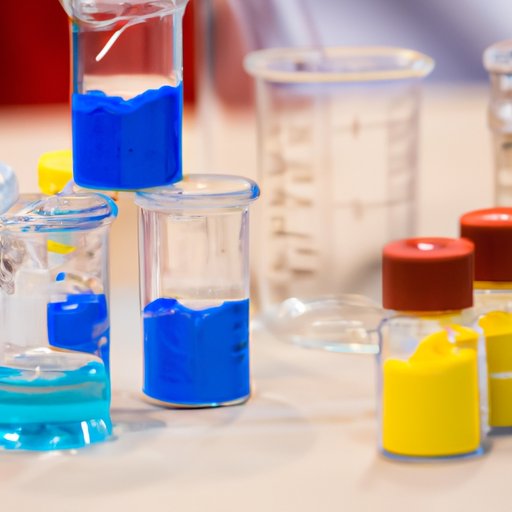
I. Introduction
Concentration is a fundamental concept in chemistry that refers to the amount of a substance present in a given volume or mass. Understanding concentration is essential in many fields, including medicine, biology, and environmental science, as it plays a crucial role in chemical reactions and practical applications. This article is a beginner’s guide to understanding and calculating concentration, aimed at students and professionals alike.
II. Basic concepts and calculations
Concentration can be expressed in different units, including mass, volume, and molarity. To calculate concentration, one needs to know the amount of the substance present and the volume or mass of the solution. For instance, if 1 gram of salt is dissolved in 100 milliliters of water, the concentration of the salt solution is 1% or 10 milligrams per milliliter. It is important to be able to convert between units of concentration; for example, to convert from milligrams per milliliter to molarity, one would divide the concentration by the molecular weight of the solute.
III. Advanced calculations and equations
More complex concentration calculations include dilution and titration, which are used in laboratory settings to prepare solutions of known concentration or identify unknown concentrations. For instance, to dilute a known concentration of a solution, one would add a specific amount of solvent to the existing solution. Specific equations and formulas, such as Beer’s Law and the Henderson-Hasselbalch equation, can also be used to calculate concentration in specific scenarios, such as determining the concentration of a colored compound from its absorbance or calculating pH in an acid-base system.
IV. Different units of concentration
It is important to clarify the differences between mass, volume, and molar units of concentration, particularly for conversions between units. Mass concentration refers to the amount of solute present per unit mass of solution, usually expressed in grams per liter. Volume concentration, on the other hand, refers to the amount of solute present per unit volume of solution, usually expressed in milligrams per milliliter. Molar concentration, or molarity, refers to the number of moles of solute per liter of solution and is the most commonly used unit in chemistry.
V. Importance of concentration in chemistry
Concentration plays a crucial role in chemical reactions and affects properties such as pH, solubility, and reactivity. For instance, increasing the concentration of a reactant will increase the likelihood of a reaction occurring. Understanding concentration is also important for practical applications in chemistry, such as preparing solutions of known concentration or identifying pollutants in a sample.
VI. Tips and tricks for calculating concentration
When calculating concentration, it is important to identify the most appropriate unit to use for a given scenario. Keeping track of units and ensuring they are consistent throughout the calculation will help avoid errors. A common mistake is to confuse mass and volume units or use incorrect molecular weights or conversion factors.
VII. Calculating concentration in real-world situations
Calculating concentration is essential in many real-world scenarios, such as determining the alcohol content of a beverage or measuring the concentration of pollutants in water. To calculate alcohol content, one needs to know the weight percent of alcohol present in the beverage, the specific gravity of the beverage, and the volume of the serving. For pollutants in water, one would need to take a sample, analyze it in a laboratory, and calculate the concentration based on the amount of pollutant present and the volume of the water sample.
VIII. Concentration calculations in biology and medicine
Concentration calculations are also used in biology and medicine, particularly in the context of calculating dosage for medication and determining the concentration of biomolecules. For example, to calculate a dosage for a medication, one would need to know the mass concentration of the active ingredient per unit volume, the patient’s weight, and the desired dose. In biology, to determine the concentration of a biomolecule such as DNA or protein, one would need to perform a spectrophotometry assay and use a specific equation to calculate the concentration based on the absorbance of the sample.
IX. Conclusion
Calculating concentration is a fundamental skill in chemistry that is essential for many practical applications across different fields. By understanding the different units of concentration, the equations and formulas used, and the tips and tricks for avoiding common errors, one can confidently and accurately calculate concentrations in various scenarios. Whether in a laboratory or real-world setting, knowing how to calculate concentration is crucial for making informed decisions and understanding the chemical properties of a system.




